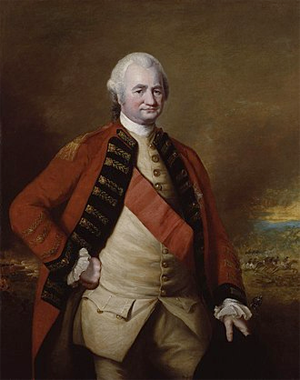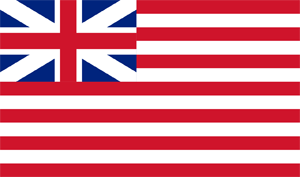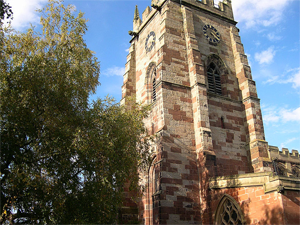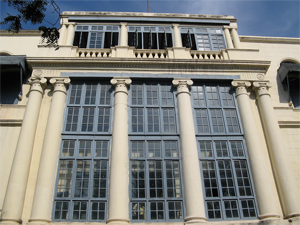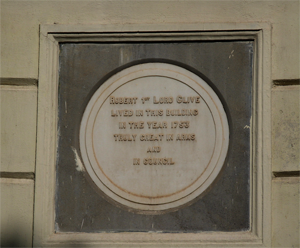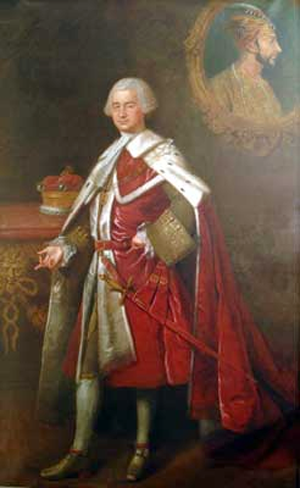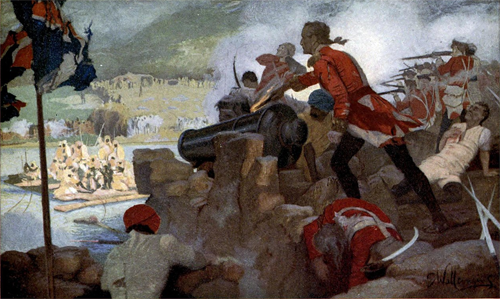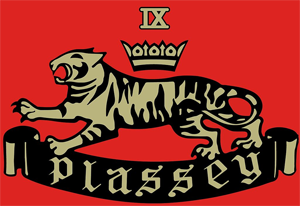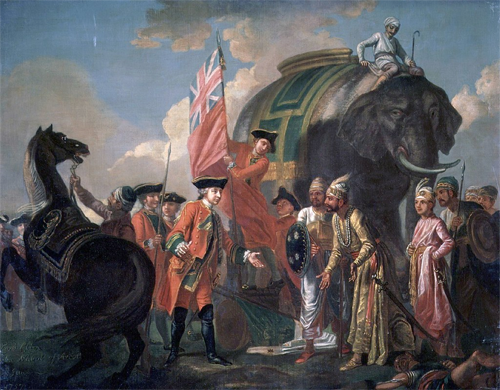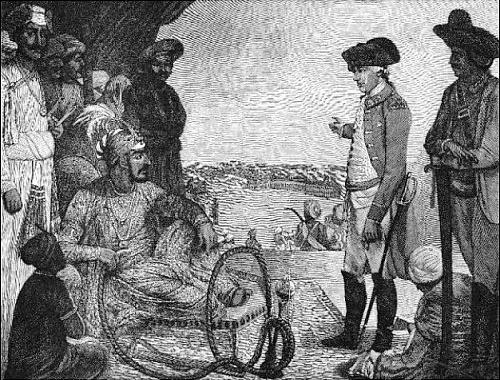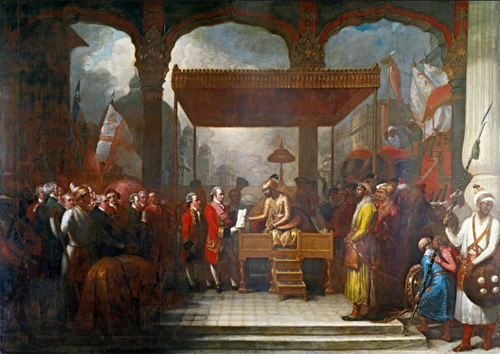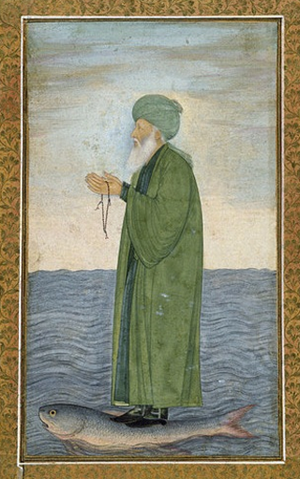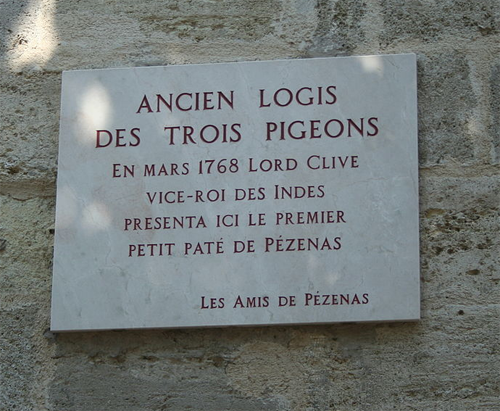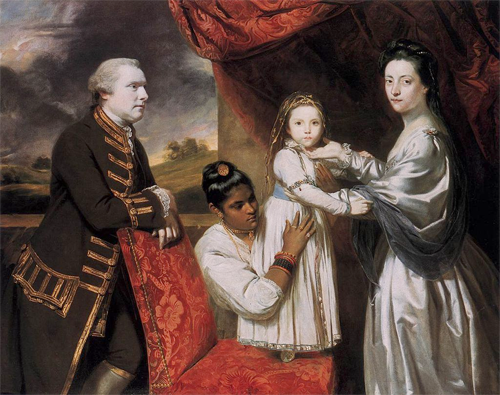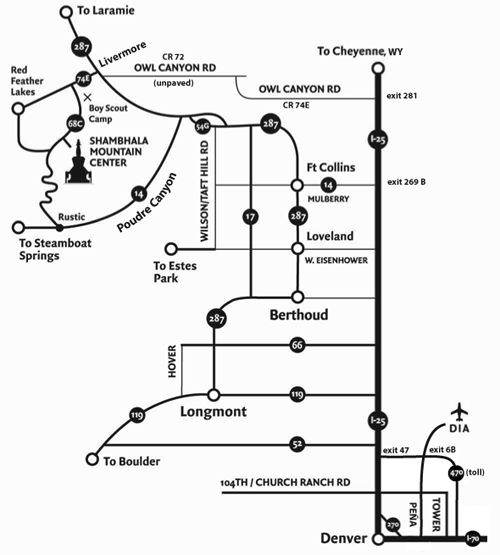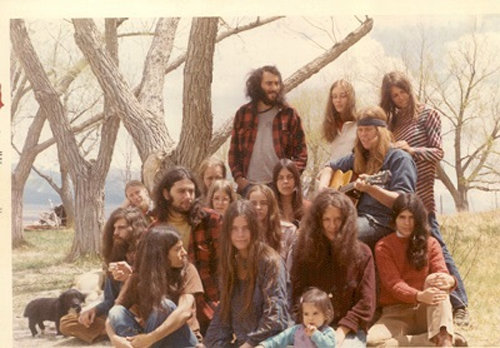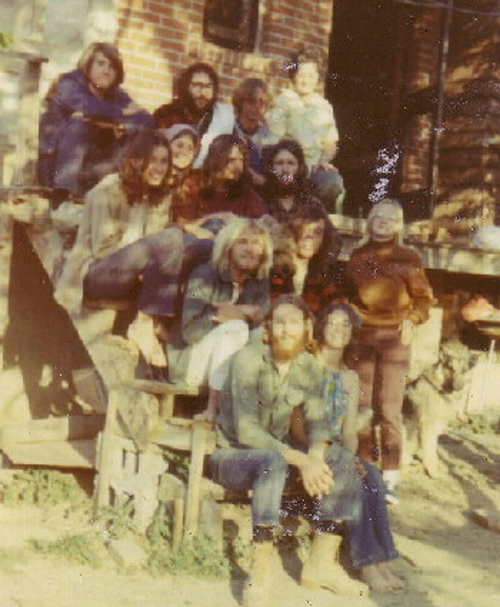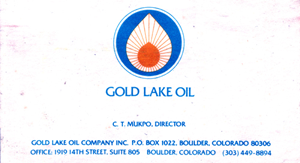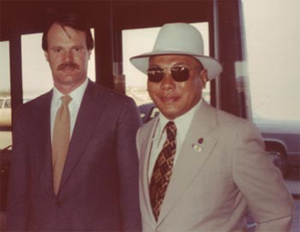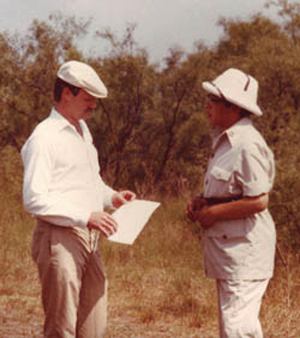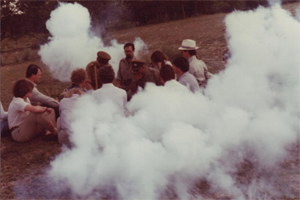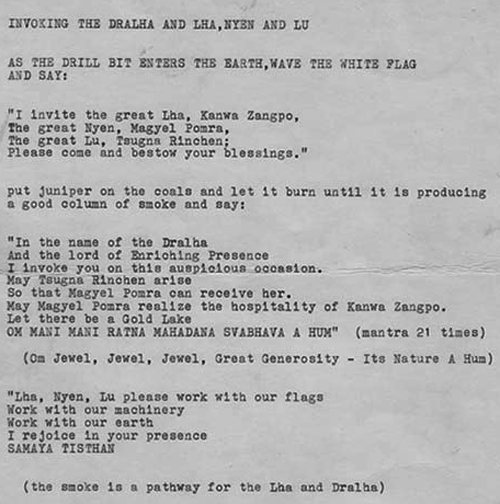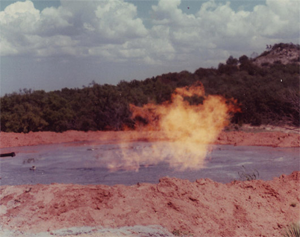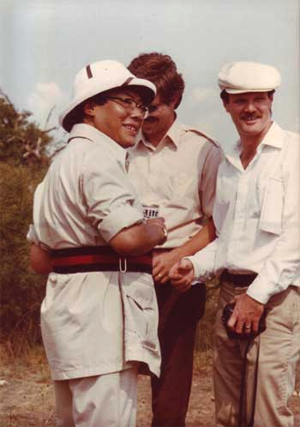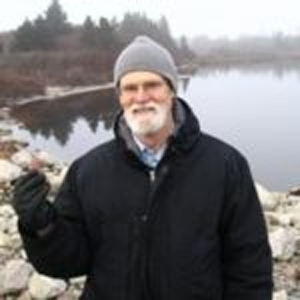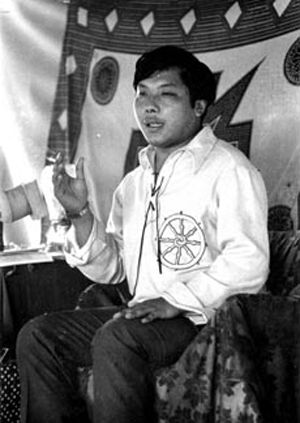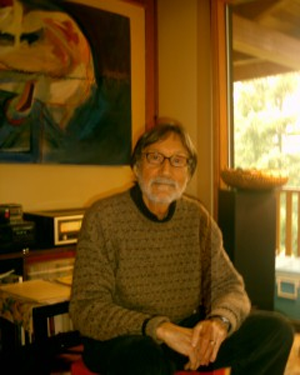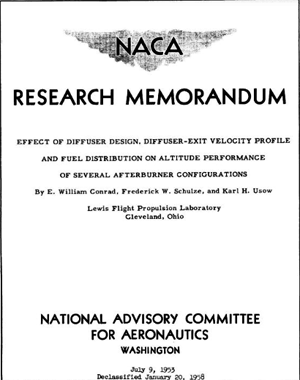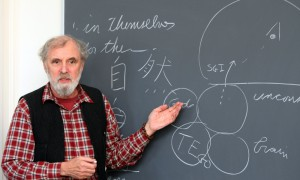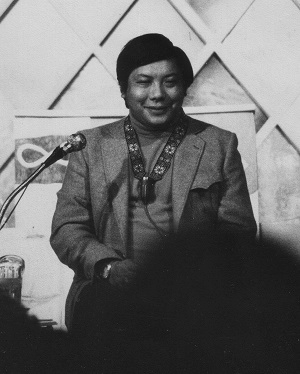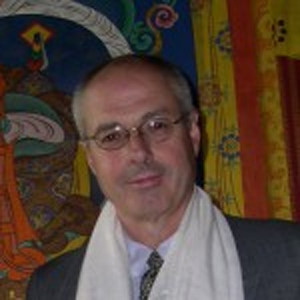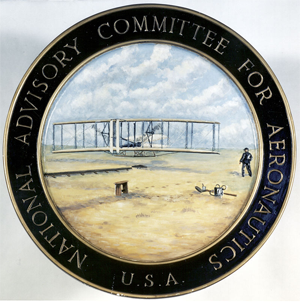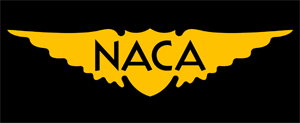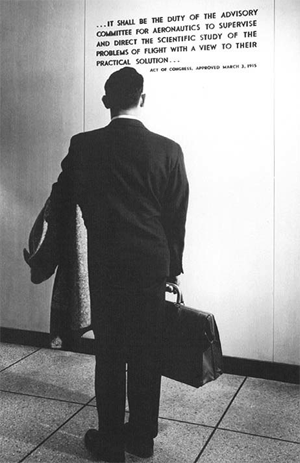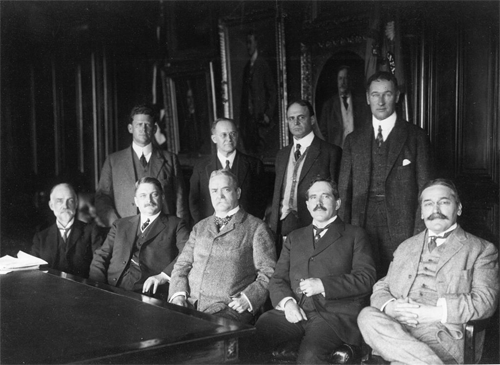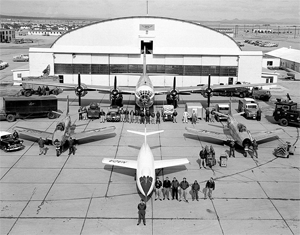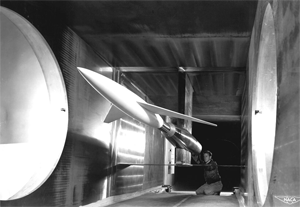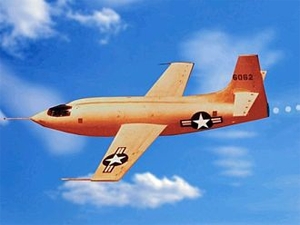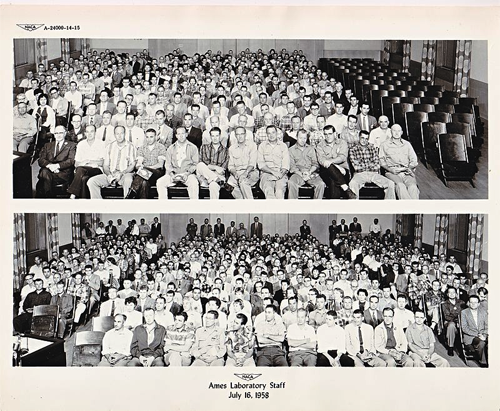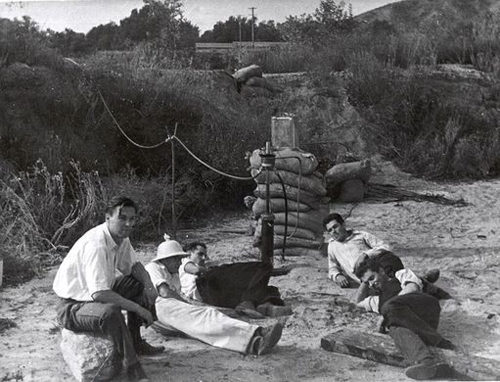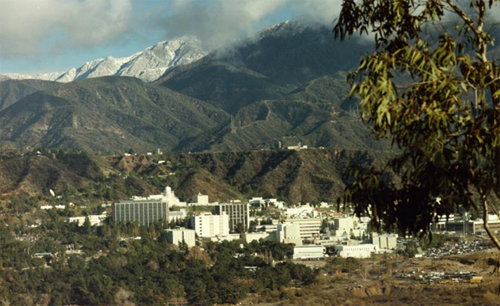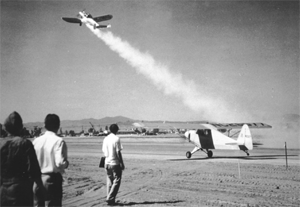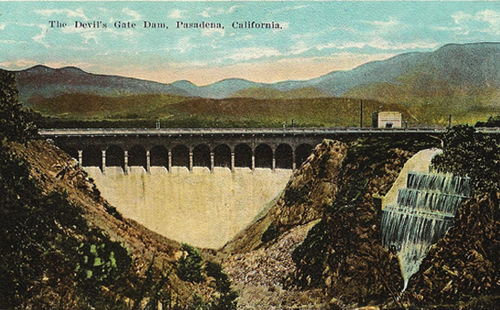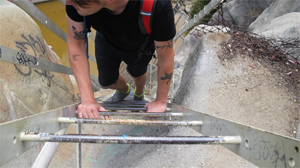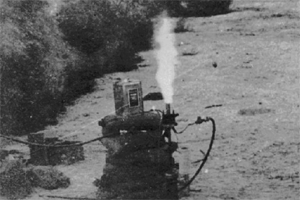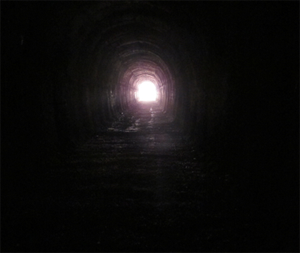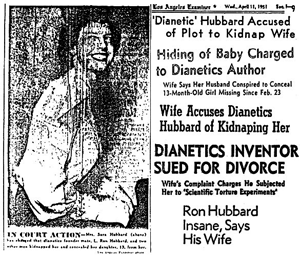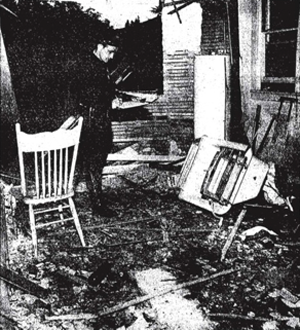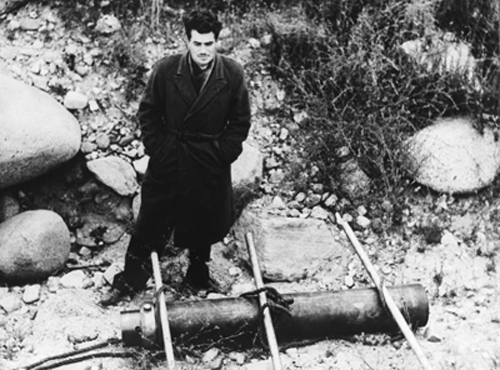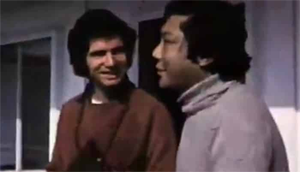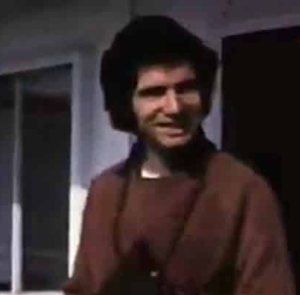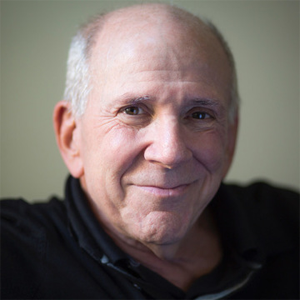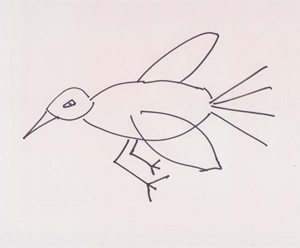by Emma Lauze
Art Journal 43
June 2, 2014
NOTICE: THIS WORK MAY BE PROTECTED BY COPYRIGHT
YOU ARE REQUIRED TO READ THE COPYRIGHT NOTICE AT THIS LINK BEFORE YOU READ THE FOLLOWING WORK, THAT IS AVAILABLE SOLELY FOR PRIVATE STUDY, SCHOLARSHIP OR RESEARCH PURSUANT TO 17 U.S.C. SECTION 107 AND 108. IN THE EVENT THAT THE LIBRARY DETERMINES THAT UNLAWFUL COPYING OF THIS WORK HAS OCCURRED, THE LIBRARY HAS THE RIGHT TO BLOCK THE I.P. ADDRESS AT WHICH THE UNLAWFUL COPYING APPEARED TO HAVE OCCURRED. THANK YOU FOR RESPECTING THE RIGHTS OF COPYRIGHT OWNERS.
I was born Diana Judith Pybus at Queen Charlotte's Hospital in London, England, on October 8, 1953, at midnight on the new moon. My great-great grandfather was the first British ambassador to Ceylon and a member of the Council of Madras. When he returned to England, the king honored him by adding an elephant to the family coat of arms, which is also part of the Pybus seal on the family signet ring.
David Humphrey Pybus, my father, grew up in a large country house in the village of Hexham in Northumberland in the north of England. The house was close to Hadrian's Wall and in fact was made out of stones from the wall, so it had enormously thick walls. Denton Hall, as it was called, is one of the famous haunted houses in England.
-- Dragon Thunder: My Life with Chogyam Trungpa, by Diana J. Mukpo with Carolyn Rose Gimian
N. B. The following oath was tendered to, and taken by Mr. Holwell in Council the 24th of December, 1759."I John Zephaniah Holwell, one of the Council of Fort William, 1756, when Kissendass, the son of Rajah Bullob, received the protection of this presidency, do solemnly swear that I never did, directly or indirectly, receive from the said Kissendass, or from anyone on his behalf, any the least reward or gratuity, either in money, jewels, or merchandise, for such protection granted the said Kissendass, and that I never did, on any other pretence or consideration whatsoever, benefit myself by the said Kissendass to the amount or value of one rupee. So help me God.
J. Z. Holwell."
***
The scrutiny ordered in the before-recited 132d paragraph, was made by Colonel Clive at Moorshadabad, (where Kissendass then resided) at the time the Colonel went to take leave of the Nabob, on his departure for Europe. On his return to Fort William, he wrote the following letter to the Board, on the subject of his enquiry.To the Gentlemen of Council.
22d January, 1760.
Sirs,
"The justice I owe to my own reputation, as well as my duty to the Company, obliged me, prior to the resignation of this Government, to use my utmost endeavors in coming at the truth of the heavy charge, seemingly contained against Mr. Holwell, in the 132d paragraph of the general letter. Enclosed is the solemn attestation of Kissendass; and I make no doubt but that gentleman's innocence will appear as clear to the Court of Directors, as it did to us who were present at, and witnessed the said attestation."
N. B. The gentlemen who witnessed the attestation were,
Col. Clive,
Col. Ford,
Major Caillaud,
Mr. Pybus,
Capt. Carnac.
-- Important Facts regarding the East India Company's Affairs in Bengal, from the Year 1752 to 1760. This Treatise Contains an Exact State of the Company's Revenues in that Settlement; With Copies of several very interesting Letters Showing Particularly, The Real Causes Which Drew on the Presidency of Bengal the Dreadful Catastrophe of the Year 1767; and Vindicating the Character of Mr. Holwell From Many Scandalous Aspersions Unjustly Thrown Out Against Him, in an Anonymous Pamphlet, Published March 6th, 1764, Entitled, "Reflections on the Present State of Our East-India Affairs." by J.Z. Holwell
-- The East India Company: The original corporate raiders. For a century, the East India Company conquered, subjugated and plundered vast tracts of south Asia. The lessons of its brutal reign have never been more relevant, by William Dalrymple
-- Speculative development and the origins and history of East India Company settlement in Cavendish Square and Harley Street, by Harriet Richardson & Peter Guillery
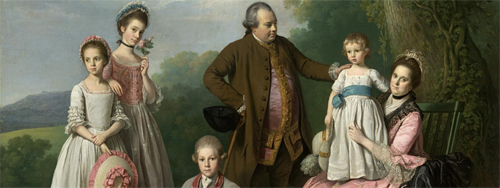
The National Gallery of Victoria has recently acquired a magnificent conversation piece of The Pybus family, c.1769, by the British artist Nathaniel Dance (1735–1811). The painting will complement the NGV’s already impressive holdings in the area of eighteenth-century British art and will be the first work by Dance on display in a public collection in Australia (fig. 1).
The picture represents John Pybus Senior (1727–1789), a retired East India Company servant, and his wife Martha, née Small, (1733–1802), with their children identified, from left to right as: Martha (1758–1788), Anne (1756–1791), John Junior (1754–1808), and Charles Small (1766–1810). The family is depicted full-length, exquisitely dressed in tones of pink and grey, in an idyllic English-landscape setting. The painting was brought to Australia in 1897 by descendants of the sitters and, from that point on, escaped the notice of scholars of both Nathaniel Dance and eighteenth-century British art. It is a source, therefore, of great excitement that this beautiful work has now emerged, newly cleaned, into the public sphere.
John Pybus Senior was born into modest circumstances on 22 November 1727, the only child of Bryan Pybus (1690–1747) of Dover and Mary Kempster of Harwich.1 His father came from Thirsk in Yorkshire but worked as an agent on the packet boats at Dover.2 Aged fifteen, on 15 December 1742, John was sent as a writer to Fort St George, Madras, by the East India Company. The post was clerical but it did at least offer the opportunity for advancement. At the very same meeting, Robert Clive – known to posterity as Clive of India – was also appointed as a writer.3
In March 1752 John Pybus received his first promotion when he was sent to oversee the company factory at Deve Cotah; when he returned at the end of that year he was a junior-merchant on £30 per annum.4 In view of his improved circumstances and future prospects, aged twenty-eight, he married Martha Small of Lewisham on 20 October 1753 in Madras. The young couple must have left immediately for Fort Marlborough in Sumatra where Pybus was appointed as deputy governor on a salary of £40 per annum.5 It was here on 1 January 1755 that the first of their eight children (and the oldest boy in the painting), was baptised John. Another child was born later that year but died shortly after. Their daughter Anne was born on 16 November 1756, presumably in Sumatra as well, but this is not documented; she stands second from the left in the painting.6 On the family’s return to Madras in 1757, a further daughter, Martha, was born on 30 June 1758; she is the younger girl in the painting. Pybus was to write mournfully to Robert Clive on the eve of the birth of his fifth child in March 1764, ‘If a fortune had been as easy to have got as children, I should have been a very rich fellow long ago but this I was certainly never intended to be’.7 The child died shortly after.
Immediately on his return to Madras, Pybus was engaged as assay master, followed by his appointment in October to the council who ran the Presidency of Madras. The following year he was made land customer.8 However, the same directors who only shortly before had declared themselves satisfied, started to question his actions in Sumatra, so much so that he felt compelled to return to London to defend his reputation. He resigned from the council and wrote to them explaining his sudden departure was due to ‘[t]he justification of my character, which to my great uneasiness and concern … has been most basely traduced and misrepresented to my employers’ who he had served ‘with zeal and fidelity’ for sixteen years.9
His wife and family were already in England having left India in September 1758.10 During their reunion in England, a further child was born and named Margaret Clive after his friend, but she died soon afterwards.11 Presumably having cleared his name and justified his actions, Pybus returned again to Madras in October 1761. While he was in England his brother-in-law, Mr Fairfield, had been appointed to the chieftainship of Masulipatan. Pybus, who wanted the post himself, wrote indignantly to Clive:
I have been deprived of my Right, nay I may say my rank in the service by it for what other benefit arises from Rank but that of succeeding to those Places of Profit which the service affords and very few these are of them God knows.12
Perhaps to mollify him, the council sent him as the ambassador to the King of Kandy in Ceylon. The ostensible purpose was to establish exclusive trading rights with the king over the Dutch. The embassy failed but Pybus’s report and diary survive and have been published.13 Despite the physical discomfort of the embassy, clearly it was something of which he was proud as it is commemorated on his funerary epitaph where it states that he was ‘the first Englishman received in a public character at that Prince’s court’.14 Meanwhile, his wife and family had joined him again in Madras from England, he reasoned frugally ‘I think I shall be able to support her here at as little expense as in England’.15
From November 1762, perhaps due to the intervention of Clive, he was finally appointed as the new chieftain of Masulipatan.16 Pybus must have made the fortune he had so longed for at Masulipatan as he was subsequently able to leave India and the East India Company for good. There was one further addition to the family during this period, Charles Small Pybus, who was born in November 1766 in Madras and who stands on his mother’s lap in the painting. The following November John Pybus, his wife and three17 children are documented leaving Madras for the last time to a gun salute on the Hector. The family changed boats at St Helena on to the Northumberland and arrived back in England in May 1768. Pybus’s epitaph proclaims:
Having during a period of twenty-five years filled these and other public situations in India, with fidelity to his honourable employers and credit to himself, he returned to his native country.18
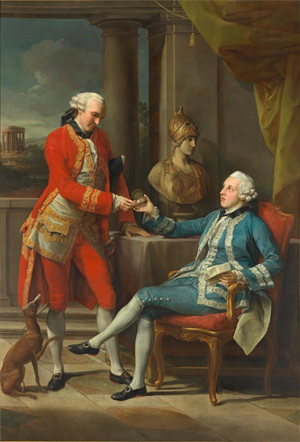
On their return to England the family seem to have settled in London at Brudley Street, Berkeley Square.19 Shortly afterwards, in August 1768, John Pybus bought the ancient property of Pricklers in East Barnet, Hertfordshire, just outside London, from Thomas Brand MP, in whose family the property had been since 1558. In true nabob fashion, the Pybus family were establishing themselves with their Indian-made money both in town and country.20 There could be no better way to advertise their new wealth and prosperity than to commission a family portrait by one of the most fashionable artists of the time, Nathaniel Dance (fig. 2). The artist had run a successful portrait practice from 13 Tavistock Row, Covent Garden, since returning from Italy in the mid 1760s. While in Italy he had made a name for himself as a painter of conversation pieces of Grand Tourists, that peculiarly English genre of informal group portraiture. In order to improve his style and his clientele, from 1762 Dance worked alongside Pompeo Batoni (1708–1787) the pre-eminent portraitist in Rome, renowned for his elegant and refined conversation pieces of English travellers (fig. 3). The prominence of Dance’s recent sitters cannot have been unimportant in Pybus’s choice of the artist for a family portrait. In 1768, commissioned by George III, Dance painted the king’s brother-in-law, Christian VII of Denmark. It was Dance alone who exhibited portraits of the king and queen at the first Royal Academy Exhibition in 1769 where he had chosen to exclusively exhibit portraits.21 On the Pybus family’s return from India, Dance’s profile as a portrait painter was particularly high.
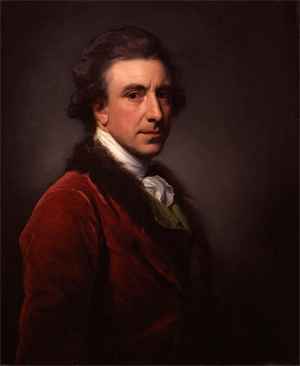
No account books or sitters’ books of Nathaniel Dance’s survive from this period and it is therefore not possible to confirm the attribution or date of the painting through this means. However, as the age of the Pybus children is well documented, it is possible to establish the date of the painting within a period of eighteen months. On the family’s return from India in May 1768, John was thirteen and a half; Ann, eleven and a half; Martha, ten; and Charles, one and a half. In the painting their childish features and appearance makes it extremely unlikely that they are any more than, at most, a year and a half older than these ages, dating the painting to no later than the end of 1769 (figs 4 & 5). Tantalisingly, we know that there was a conversation piece exhibited at the Royal Academy in 1770 which is as yet unidentified and may well prove in time to be this painting.22 Although the painting is unsigned and until now has been attributed to Dance on stylistic grounds and the family tradition of the former owners, John Pybus’s will of 1787 clearly refers to the family pictures by Dance’.23
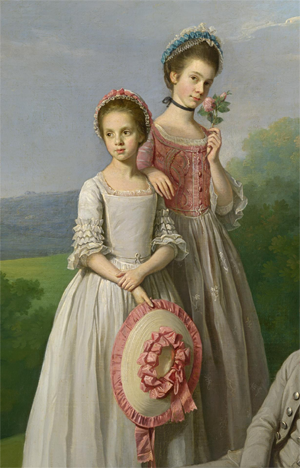
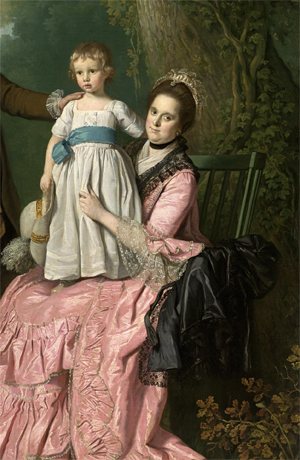
The fine clothes, elegant poses and English countryside speak volumes about the status and aspirations of the family on their return. However, the painting can be viewed more poignantly as commemorating the family’s survival. Collectively they had survived war, disease and separation. John’s beloved wife Martha had given birth to seven children, three of whom had died soon after their birth, all but one having been born in the heat and disease-ridden conditions of the East. The family had been divided between Europe and the Indian subcontinent on several occasions and even when they were together in India, it seems that Martha and the children lived at Fort St George while John Pybus lived at Masulipatan. Finally the family were reunited and were looking forward to a new life in their native country and it is this, as much as their wealth, that Dance captures for posterity.
The Landscape in which the family stands appears to be idealised and is similar to the background of other portraits by Dance, in particular the treatment of the tree with creepers climbing up the trunk (fig. 6). However, if, for argument’s sake, it does represent a location that is associated with the family, one must look to the Pricklers estate in Hertfordshire and not to Cheam, Surrey, where the family is buried, as this land was not acquired until 1788.
The Pybus conversation piece was not the only painting by Dance that John Pybus commissioned; it seems he was a good client of the artist. The use of the plural in John Pybus’s will when he mentions the family pictures by Dance makes clear that there was more than one family picture by the artist. In addition to this, a further half-length portrait of John Pybus by Dance is specifically mentioned in the will.24 In total, therefore, there were at least three paintings commissioned of the family from the painter, all of which must have been painted before the closure of his practice in 1782 and most likely predate the mid 1770s tailing off of that practice. Fascinatingly, we also know that Pybus commissioned a portrait of Robert Clive, as in 1780 Francis Fowke, resident of Benares and a school friend of John Pybus Junior, was sent by his uncle, John Walsh, ‘a large picture of Lord Clive … It is a copy of that done by Dance for Mr Pybus’.25 It is quite probable that Pybus’s painting is the prototype half-length of Clive with the Battle of Plassey in the background at Powis Castle, Wales, of which there are eight copies, one of which is in the National Portrait Gallery, London.26
Major-General the Right Honourable The Lord Clive KB FRS. Lord Clive in military uniform. The Battle of Plassey is shown behind him. By Nathaniel Dance. National Portrait Gallery, London.
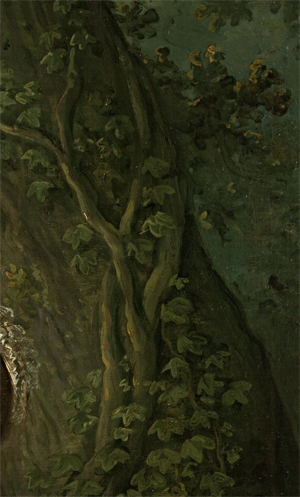
The Pybus conversation piece should be viewed not only in the context of other commissions by John Pybus from Dance but also in the wider context of a number of other portraits of East India Company servants dating from a similar period by the artist. Dance received a commission from John Pybus’s friend Robert Palk, governor of Madras, for a portrait of his wife and children which was exhibited at the Royal Academy Exhibition in 1771.27 He also painted Lady Clive and a further full-length portrait of Lord Clive, both dated to c.1772–73 and at Powis Castle, Wales.28 It can be no coincidence that these three close associates all commissioned portraits by Dance during the same period. In addition there is a cryptic note in John Pybus’s papers for ‘Cash paid Dance the Limner for the frame of a Picture’ under the account of his son-in-law Sir Robert Fletcher who was on the military side of the company – was he too painted by the artist?29
The subsequent history of the painting can be traced through the wills of the family. In his own will John Pybus requested that:
I also will and direct that my said wife shall have the possession of our family pictures by Dance … during her life and after her demise I give the said family pictures and all my other pictures and paintings of whatsoever kind not herein before or herein after specifically disposed of, to my son John Pybus’.30
His wife Martha died on 4 November 1802 in her sixty-ninth year; the painting must then have passed to John Pybus Junior. In his will of 1808 it is written: ‘I give to my dear son John Bryan Pybus all my family pictures’.31 He died in the same year and the painting must then have passed to his only son, who, like his grandfather, had returned to Madras as a writer in 1807. It is possible that the painting travelled out to India at this point. John Bryan Pybus married Catherine Wilson in Madras in 1818, but he died shortly afterwards and was buried in Madras on 27 January 1820.32 His widow and son John, who had been born in 1819, probably returned to England at this point. We certainly know that the painting passed to the son in later life, as on 18 May 1885 a John Pybus of 33 Spring Gardens, London, wrote to the National Portrait Gallery offering the painting on loan, describing it in a letter as
a fine picture by ‘Dance’ with a landscape by ‘Wilson’ a family group of the late John Pybus and his wife and children about 120 years old and in very fine preservation.33
I believe the mention of the landscape being by Wilson must be discounted, the two artists are not known to have collaborated.
At the trustees meeting on 6 June 1885 the offer was turned down on the basis that loans were not accepted on principle. This John Pybus (1819–1886) and his wife Charlotte Coventry had ten children. Their eldest daughter was Martha, who married William Cooke. On her father’s death the painting seems to have passed to her brother Cecil who sold it in 1897 for £500 to Martha’s Australian grandson, Samuel Winter Cooke, the son of Cecil Pybus Cooke and Arabella Winter. The painting has then passed by descent (fig. 7).34
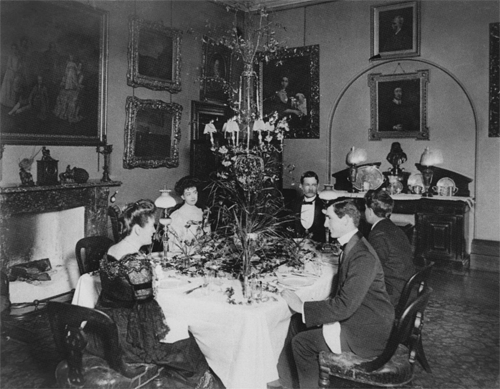
We know little of the Pybus family’s life on their return from India until in 1773, perhaps because his fortune had dwindled, John Pybus set up a bank, Pybus, Hyde, Dorsett & Cockell, at 148 New Bond Street.35 Mr Russell, John Pybus Junior’s former tutor, wrote in 1778
Mr Pybus & son are partners in a Bankers shop in Bond Street. The former struggles incessantly with an asthma and other disorders, which frequently renders his life doubtful for four and twenty hours. His son John finds full employment in the shop and has but little leisure for literary pursuits or any other pleasure.36
John Pybus Junior became a partner in the bank in 1779, replacing Mr Hyde. In 1785 a new bank was founded, Pybus, Cockell, Pybus & Call, and moved premises to Old Bond Street.37 In a letter to Warren Hastings, John Pybus Senior asked if he
might assist in promoting the interests of our house by recommending it to any of your friends who may not already have appointed attorneys to the management of their money concerns in this country.38
The records of the bank do not survive although it seems to have been deliberately aimed at the niche market of absentee East India men.
In 1774 Ann made an impressive marriage to Brigadier-General Sir Robert Fletcher, Commander in Chief of the British Forces, and returned with him to India. She was followed in 1776 by her younger sister, Martha, who shortly after her arrival married Lieutenant Arthur Lysaght.39 Soon after, Sir Robert died on Mauritius on 24 December 1776 and Ann returned as a wealthy widow to live with her family in England who had by now moved to Harley Street.40 At about this time the eighth child of John and Martha Pybus was born, Catherine Amelia; she was the only child who lived to adulthood and who is not in the painting. Charles Small Pybus qualified to the Bar and went on to became MP for Dover and a lord of the Admiralty.41
By the time of his will in 1787 John Pybus was no longer living in Harley Street but in Old Bond Street above the banking house. He had sold his country estate, Pricklers, in 1781 to General Provost for £9000.42 In a codicil to his will, in the knowledge that he was dying, John Pybus bought Cheam House, Cheam, Surrey, just outside London, from the trustees of the late Edmund Saxnay for £1500 at Carraway’s Coffee House in 1788. He bought the property as a security for his wife from which she might live after his demise. The house was pulled down in 1922 but is recorded in photographs prior to this.43
John Pybus died on 22 June 1789 and was buried on 29 June in the Church of St Dunstan’s, Cheam. His wife Martha, sons John and Charles and daughter Ann were also all buried there. It is only his daughter Martha who is not buried at Cheam; she died in 1788, most probably in India, having remarried a company surgeon on her first husband’s death.44 Three Pybus wall monuments were saved from destruction when the church was rebuilt in 1864 and can be seen in the Lumley Chapel – the remaining part of the medieval church.45 Cheam House was sold by John Pybus Junior in 1803 following his mother’s death.
The reappearance of the Pybus conversation piece has cast a refreshing new light on Nathaniel Dance and his portrait practice. As a Dance portrait in a good state of preservation, it highlights the quality of the artist’s work on his return to London. This has not previously been studied in any great depth, his work in Italy and as a history painter having always attracted more attention. Through research on John Pybus’s patronage of Dance it has also become clear that he was not alone as an East India Company servant in favouring the artist. Pybus, like many other nabobs, returned to England in the 1760s with a large disposable income just when Dance’s star was in the ascendant and it is unsurprising to find the two attracted to each other. John Pybus may have until now only appeared in history books as a footnote to Robert Clive or as the father of his more famous son Charles Small Pybus but he and his family are deserving of greater attention by historians, not least because of Dance’s family portrait.
Emma Lauze, Photographic Activist, The Paul Mellon Centre for Studies in British Art, London (in 2004).
_______________
Notes:
In addition to the specific citations that follow, a number of official public records pertaining to Pybus family genealogy, travel and property dealings were used in researching this article. For Pybus family genealogy, see Ecclesiastical Returns, Madras, 1698–1784, N/2/1 f. 279, f. 312, f. 534 & J/1/22 f. 149; Sumatra Proceedings, 1755, G35/10 & 10A; Oriental and India Office Collections, BL; Register of St Dunstan’s, Cheam, Sutton Archives and Local Studies Collection. For travel dates and passenger lists, see Journal of the Hector, L/MAR/B 486F, 4 Nov. 1767 & 19 Feb. 1768; –Northumberland L/MAR/B/141D 22 Mar. & 29 May 1768, Oriental and India Office Collections. For property purchases and sales, see Indenture of Lease, 5 Feb. 1788 and Release, 6 Feb. 1788, Sutton Archives and Local Studies Collection.
Websites:
http://www.bl.uk/collections/orientalandindian.html
http://www.sutton.gov.uk/Sutton/Relaxin ... tudies.htm
1 See Rev. W. Betham, The Baronetage of England, vol. 3, London, 1801–05, p.399, fn.
2 See R. G. Thorne, History of Parliament: The House of Commons 1790–1820, vol. 4, London, 1986, p. 905.
3 See Court Minute Book, B/67, pp. 177–83, Oriental and India Office Collections, BL, London.
4 See B. S. Baliga, (ed.), Records of Fort St George. Diary and Consultation Book of 1752, Madras, 1939, pp. 51 & 61.
5 ibid., p. 385.
6 Ann Pybus’s birth date appears on her tomb in the Lumley Chapel, Cheam, (see transcription in Rev. O. Manning, The History and Antiquities of the County of Surrey, vol. 2, London, 1804–14, p.477).
7 John Pybus, letter to Robert Clive, 27 March 1764, Clive Papers, MSS Eur/G37, box 32, Oriental and India Office Collections.
8 See Baliga, (ed.), Records of Fort St George, 1758, 1953, pp. 15 & 193.
9 Pybus, letter, 1 January 1760, transcribed in Baliga, (ed.), Records of Fort St George, 1760, p.24.
10 ibid., p. 168.
11 Manning, p. 477.
12 Pybus, letter, 8 April 1762, box 29.
13 See Pybus, Account of Mr Pybus’s Mission to the King of Kandy in 1762, Ceylon, 1862.
14 Manning, p. 476.
15 Pybus, letter, 12 January 1763.
16 See Baliga, (ed.), Records of Fort St George, 1762, 1946, P. 74.
17 It is not clear why three, not four, children are documented; as Charles Small was a baby it is possible he was not documented, it is also possible that John Junior was already in England for his education (see Journal of the Hector, L/MAR/B 486F, entries for 4 Nov. 1767 & 19 Feb. 1768, Oriental and India Office Collections).
18 Epitaph on John Pybus’s wall monument, Lumley Chapel, Cheam, transcribed in Manning, pp. 476–7.
19 Pybus, letter, 22 June 1768, box 53.
20 See J. M. Holzman, The Nabobs in England. A Study of the Returned Anglo-Indian 1760–1785, New York, 1926, pp. 7 & 158.
21 See D. Goudreau, Nathaniel Dance 1735–1811 (exh. cat.), Iveagh Bequest, Kenwood, London, 1977, introd., unpaginated.
22 See A. Graves, The Royal Academy of Arts. A Complete Dictionary of Contributors and their Work from its Foundation in 1769 to 1904, vol. 2, London, 1905, p.239, 1770, entry no. 69.
23 Will of John Pybus Senior, 18 August 1787, PROB 11/1184, London.
24 ibid.
25 John Walsh, letter to Francis Fowke, 23 June 1780, Fowke Papers, MSS Eur D11, K25, letter 19, Oriental and India Office Collections.
26 See J. Kerslake, Early Georgian Portraits, National Portrait Gallery, London, 1977, pp. 56–9.
27 See Graves, p. 239, 1771, entry no. 56. The painting is now unlocated and is known only from photographs.
28 See J. Steegman, A Survey of Portraits in Welsh Houses, vol. 1, Cardiff, 1956–62, p. 266, nos 47 & 50; and Goudreau, nos 32 & 33.
29 Pybus, note in account book, February 20 1775, John Pybus Papers, MSS Eur f. 110/2, Oriental and India Office Collections.
30 Will of John Pybus Senior, PROB 11/1184.
31 Will of John Pybus Junior, 27 May 1808, PROB 11/1480.
32 See C. C. Prinsep, Record of Services of the Honourable East India Company’s Civil Servants in the Madras Presidency from 1741–1858, London, 1885, pp. 117–18. For his marriage and birth of child see Ecclesiastical Returns, Madras, J/1/22 f. 149.
33 Letter with minutes of the NG trustees 176th meeting, National Portrait Gallery archive.
34 Details of the sale to the Australian line of the family have been taken from notes kindly provided by the National Gallery of Victoria, having been compiled from the Winter Cooke Papers at the La Trobe Australian Manuscripts Collection, State Library of Victoria.
35 See F. G. Hilton Price, A Handbook of London Bankers with Some Account of their Predecessors the Early Goldsmiths, London, 1876, p. 21.
36 See S. Russell, letter to Francis Fowke, Marylebone, 14 January 1778, Fowke Papers, MSS Eur D11, K25, letter 8, Oriental and India Office Collections.
37 See Hilton Price, p. 21.
38 John Pybus, letter to Warren Hastings, 8 October 1784, Warren Hastings MSS Add. 29166 f. 254, Manuscript Collection, BL.
39 See Ecclesiastical Returns, Madras, 1698–1784, N2/1 f. 378.
40 See Russell, letter, 14 January 1778.
41 See Thorne, pp. 905–7.
42 See Holzman, pp. 76 & 158.
43 See photographic files, Sutton Archives.
44 See Manning, p. 477.
45 See C. J. Marshall, A History of the Old Villages of Cheam and Sutton, Surrey, 1936, p. 29.

